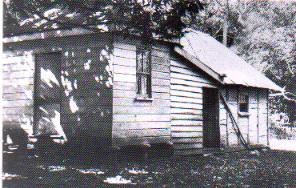| Welcome
About this Site
Info On Dunk Island
The Original BeachComber of Dunk Island
Dunk Island Photos (page 2)
Other Whitsunday Island Photos
Meet Yakini- The Arrival
Dunk (page 1)
Yakini - My Favourite Pics
|
|
|
Edmund Banfield's most famous book, "Confessions of a Beachcomber" was his first in a series of 4 books about his life on Dunk Island. He also wrote for neswpapers and journals under the pen name, Rob Krusoe.
Banfield moved to the island with his wife Bertha in 1897, and he remained there until his death in 1923.
He had worked as a journalist with the Townsville Daily Bulletin for 15 years until he became desperately ill through overwork and exhaustion. In September, 1896, he camped off the island with hhis wife Bertha and a few friends. He had previously absorbed the writings of Thoreau, the American writer and philosopher, who advocated a life close to nature, and he became captivated with the thought of living on this beautiful island.
They managed to lease an area of the island for 30 years and later secured a freehold block. When they arrived to take up permanent residence in 1897, they were greeted by Tom, a resident Aborigine who they had become acquainted with on their earlier visit. Tom helped them unload their provisions and worked on and off for them for many years until he met a sad death on the mainland when he was speared by his half-brother in a drunken brawl.
|
 Edmund Banfield
Ten years after arriving on Dunk Island, "Confessions of a Beachcomber" was published and then followed by "My Tropic Isle", "Tropic Days", and then "Last Leaves from Dunk. In colorful prose, he shared the secrets of nature that he had uncovered, wrote about the legends and often macabre customs of the local aborigines, and told many engrossing stories about his own experiences as well as those of visitors. During his time on the island, he also recorded and documented dozens of species of birds on the island.
Edmund Banfield
Ten years after arriving on Dunk Island, "Confessions of a Beachcomber" was published and then followed by "My Tropic Isle", "Tropic Days", and then "Last Leaves from Dunk. In colorful prose, he shared the secrets of nature that he had uncovered, wrote about the legends and often macabre customs of the local aborigines, and told many engrossing stories about his own experiences as well as those of visitors. During his time on the island, he also recorded and documented dozens of species of birds on the island. |
|
After their arrival, the Banfields first lived in tents, but then had a pre-fabricated cedar hut shipped to the island. They lived in this for 6 years until a larger house was built. You can see the hut in the photo on this page. Apart from Bertha, his wife Bertha and an Irish woman named Essie who lived and worked for the Banfields for part of the time, they were alone on the island. However, they did clear over 4 acres of land for use as a plantation for growing fruit and vegetables, including bananas, oranges, pawpaws, pineapples, custard apples, melons, sweet potatoes, maize, strawberries, herbs and even coffee. The sea provided food too - oysters and crabs from the mangrove flats and an abundance of fish. The Banfields also kept a few poultry as well as cows and goats which provided milk and fresh meat. They arranged for a coastal steamer to pass by the island once a week which dropped off supplies or mail for them. Edmund Banfield continued to write to support their life on the island.
.
|
|
Unfortunately, in 1923, Edmund experienced a severe, chronic attack of appendicitis, and only Bertha was with him on the island at the time. It was several days before a ship passed the island by which time, Edmund had died. Bertha outlived Edmund by another 10 years. She remained on the island with Essie for another year, and then travelled quite extensively throughout the east coast of Australia. After her death, her ashes were sprinkled on the cairn marking Edmund's grave on Dunk Island. On the cairn is an inscription which reads: "If a man does not keep pace with his companions, perhaps it is because he hears a different drummer. Let him step to the music he hears." Interest in Banfield remains high - his books have been re-printed and the Royal Queensland Theatre Company produced a play about his life.
|
 This is a photo of the cedar hut - their first home on the island which is still still there.
This is a photo of the cedar hut - their first home on the island which is still still there.
|
This is the homestead which they built a few years later which unfortunately is no long there.
|
|
|


